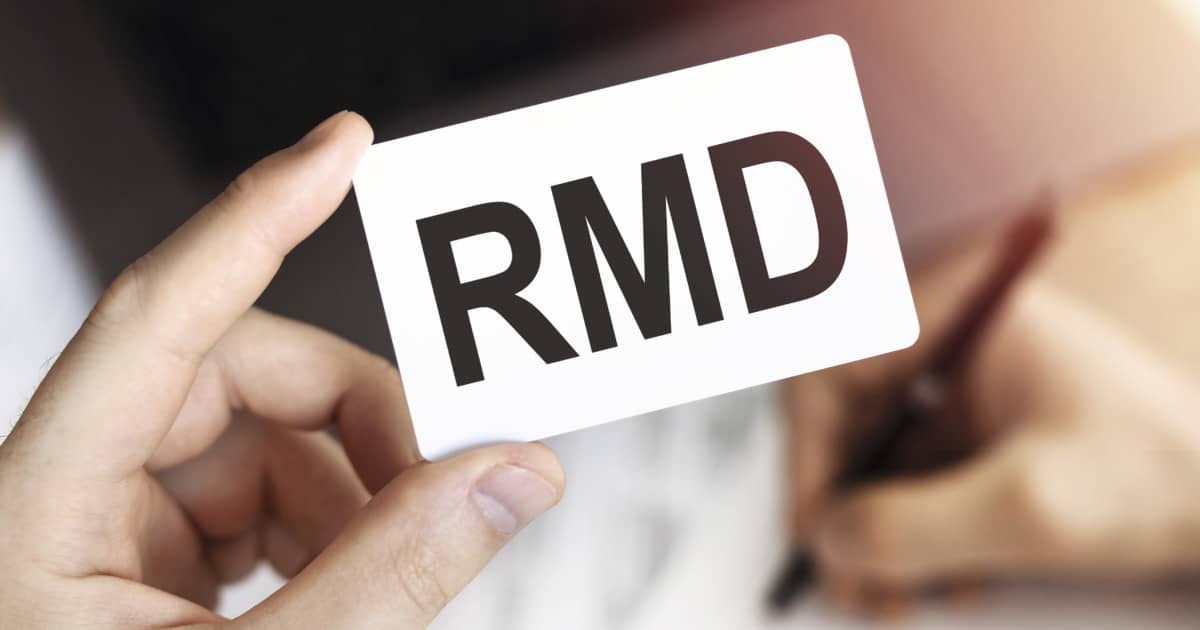If you took a break from taking required minimum distributions (RMDs) in 2020 thanks to the CARES Act, we hope you had a nice vacation and are ready to come back and refresh your retirement income strategy.
Going forward, you’ll want to take a look at your overall financial situation to figure out your plan for the future. And welcome to the club if you’re just turning 72, the age where the IRS mandates that you start taking withdrawals from most qualified retirement accounts.
RMDs should be an important part of your retirement income plan, but it’s important to know that they come with some strict rules about timing and a formula based on your age for the amount you have to take.
Of course retirement rules can always change in the future. For instance, a legislative proposal called The Securing a Strong Retirement (SECURE 2.0) passed the House Ways and Means Committee in early 2021 and is awaiting Senate action, with the final form still to be determined. The proposal incudes provisions significantly reducing the underpayment penalty, increasing the starting age to 75 over time, and increasing catch-up contributions for those over 60.
The proposed legislation is bipartisan and would achieve a number of important reforms aimed at securing a stronger private retirement system. Regardless of what happens, you’ll want to consider all your options for now and make sure not to miss any key deadlines that could cost you penalties.
How do you calculate and withdraw RMDs?
A financial professional or tax advisor can help you figure out the amount you need to take each year based on your age and the balances at the end of the previous year of your accounts. Once you’ve determined the appropriate amount for each year, you can opt to take the distributions for your RMDs yourself. However, some providers allow you to instead set up automatic withdrawals.
Regardless of the withdrawal schedule, the deadline is important. The IRS penalty for not taking an RMD, or for taking less than the required amount, is steep: 50% of the amount not taken on time. The deadline is normally April 1 of the year after you turn 72, and December 31 each following year.
Many people choose to have taxes withheld from their RMDs, as it is counted at ordinary income. If you choose not to do this, make sure you set aside money to pay they taxes. A word of caution: Sometimes under-withholding can result in a tax penalty.
What should I do with my RMDs?
You have plenty of options for how to use your withdrawals. Among them:
- Living expenses. If you plan to use RMDs to pay for current expenses, it often makes sense to have a budget in retirement. Going through the budgeting process can help you estimate your living expenses, manage your cash flow, and determine if you’ll need to use your RMDs to fund your retirement lifestyle.
- New investments. For some retirees, Social Security benefits and other income may cover your expected expenses. Remember, even though you may not need RMD monies to fund your retirement spending, you’re still required to take them out of your applicable retirement accounts. Although your RMD can’t be reinvested back into an IRA, you can put money into taxable brokerage accounts and then reinvest your RMD proceeds according to a strategy that fits your needs.
- Wealth transfer to a loved one. There are several tax-smart ways to pass money to your loved ones. If you’d like to help give someone’s education a head start, consider using the money you take for your RMD to fund a 529 college savings account. Another option is to convert some of your traditional IRA assets to a Roth IRA, which can be inherited without as many income tax implications.
- Charitable donations. If you have to satisfy an RMD and would also like to make a gift to charity, then consider a qualified charitable distribution (QCD). A QCD is a direct transfer of funds from your IRA custodian, payable to a qualified charity. Once you’ve reached age 72, the QCD amount counts toward your RMD for the year, up to an annual maximum of $100,000. It’s not included in your gross charitable contributions. These can be significant advantages for certain high-income earners.
Plan ahead
Whichever scenario applies to you, RMDs are likely to play an important role in your finances in retirement. Building a thoughtful retirement income plan can help you use RMDs in the most efficient way, and help you reach your important financial goals. It’s important to spend some time with a financial and tax professional so that you can better understand your RMD options, to help ensure that you are meeting the IRS requirements, and to help avoid a costly tax mistake.

